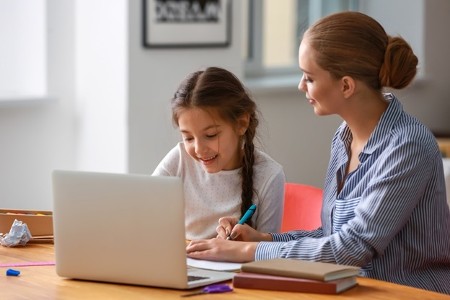June 18, 2020 – While it has suddenly surged in popularity out of necessity because of COVID-19, homeschooling has been around for decades.
It started with one man’s vision to provide a sound alternative to the industrial model of classroom education. John Holt, an educational theorist, and school reform supporter, encouraged parents to liberate children from traditional learning by advocating for homeschooling. The result, homeschooling has become a movement widely practiced not only in the United States but all over the globe.
According to the U.S. National Home Education Research Institute, there are an estimated 2.5 million homeschool students in America as of spring 2019. Outside of the U.S. the numbers are much smaller with the global total under 3 million, largely because in many countries homeschooling remains illegal. The countries with the highest numbers of homeschooled children are the United States, United Kingdom, Canada, New Zealand, and Australia.
The Effects of Covid-19 on Educational Systems
In the early months of 2020, we witnessed a world reeling from the effects of the Covid-19 pandemic. Among the earliest measures taken by most governments was the temporary closure of schools to stem the spread of the virus.
According to UNESCO, these actions have affected more than 60% of the world’s student population, not to mention the localized closures have impacted millions of additional learners. In fact, the pandemic has caused more than 1.6 billion children and youth to be out of school in 161 countries.
In the United States, thousands of schools started closing in mid-March. European countries, led by Italy, closed educational institutions in that month as well. The United Kingdom was the last in Europe closing all schools indefinitely across the country and canceling examinations on March 20th.
In May, schools in Europe and North America began to slowly reopen. It was seen as an important part of restarting the economies of countries that had suffered from lockdowns and community quarantine measures. The consequences of school closures had meant parents had to take time from work to look after their children.
Germany has been leading the way in handling the new normal when it comes to education. They have proposed cutting classes in half. Hallways have been turned into one-way corridors. Breaks are staggered. Teachers and students are instructed to wear masks. Most schools have their windows and doors open to improve air circulation.
When it comes to communication, some schools are using snail and email to stay connected. The majority of interactions, however, are happening online. Many schools are recreating the classroom using digital tools like Zoom and Microsoft Teams.
This shift to learning from home by traditional bricks and mortar educational establishments is expected to continue with virtual instruction becoming part of the new school standard. For example, the United Kingdom Department for Education is now listing on its website resources for home learning. There are also nongovernment institutions like the Coalition for Responsible Home Education and UNESCO, which are offering help and homeschooling solutions for teachers and parents alike.
Tips for Homeschooling
Since education for the foreseeable future is moving to distance learning and more homeschooling, it is important for parents who have traditionally homeschooled to ensure their children can still get the best education possible. Here are some helpful tips to do so:
Creating a Daily Schedule
While homeschooling has convenience and flexibility that is not typical in traditional classrooms, it remains important to maintain a learning routine. Creating a learning schedule provides a comfortable daily structure. This should include set times for lunch breaks, activity hours, and even TV breaks. This helps children to manage their time well, and for working parents to schedule work to fit with the home learning calendar.
Setting up a Learning Environment
It can be tempting to hold the lessons anywhere in the house where the parent and child are comfortable. A designated learning area, however, facilitates better results. This way children know that a part of the home is “school” space with all the resources in place there to do schoolwork
Gathering Homeschooling Resources
Not all parents are experienced homeschooling their children. There are, however, an abundance of resources from public and private institutions to help them navigate the world of homeschooling and online learning. Many of these resources are online, but there are also local community resources that parents can reach out to for insight and support.
Making the Experience Fun
Children learn more if lessons are enjoyable. That means creating fun activities like indoor games and puzzles and other types of interactive materials. Parents can also add home activities like cooking and household chores to help children learn beyond what is in textbooks. Passion projects can include painting, and other forms of arts and crafts including learning to play a musical instrument.
The Future of Homeschooling
The current global pandemic is an accelerator shifting conventional learning to experiment with the non-conventional. The result is a move to the online world, to open education, and to more homeschooling.
In terms of government policy, this may lead to wider financial support for families who choose to homeschool or even mix a combination of institutional and home learning together after the pandemic subsides.
















